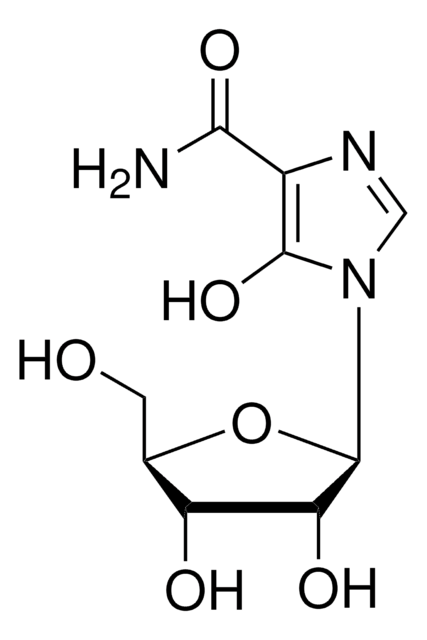I1782
Inosine Monophosphate Dehydrogenase Type II human
recombinant, expressed in E. coli
Synonim(y):
IMP:NAD oxidoreductase, IMPDH II
About This Item
Polecane produkty
rekombinowane
expressed in E. coli
Postać
solution
aktywność właściwa
≥0.05 units/mg protein
masa cząsteczkowa
~55 kDa
opakowanie
vial of ≥0.002 unit
numer dostępu UniProt
powiązane choroby
cancer
Warunki transportu
dry ice
temp. przechowywania
−70°C
informacje o genach
human ... IMPDH2(3615)
Powiązane kategorie
Opis ogólny
Zastosowanie
Działania biochem./fizjol.
Definicja jednostki
Postać fizyczna
produkt powiązany
Kod klasy składowania
12 - Non Combustible Liquids
Klasa zagrożenia wodnego (WGK)
WGK 1
Temperatura zapłonu (°F)
Not applicable
Temperatura zapłonu (°C)
Not applicable
Środki ochrony indywidualnej
Eyeshields, Gloves, multi-purpose combination respirator cartridge (US)
Certyfikaty analizy (CoA)
Poszukaj Certyfikaty analizy (CoA), wpisując numer partii/serii produktów. Numery serii i partii można znaleźć na etykiecie produktu po słowach „seria” lub „partia”.
Masz już ten produkt?
Dokumenty związane z niedawno zakupionymi produktami zostały zamieszczone w Bibliotece dokumentów.
Nasz zespół naukowców ma doświadczenie we wszystkich obszarach badań, w tym w naukach przyrodniczych, materiałoznawstwie, syntezie chemicznej, chromatografii, analityce i wielu innych dziedzinach.
Skontaktuj się z zespołem ds. pomocy technicznej







